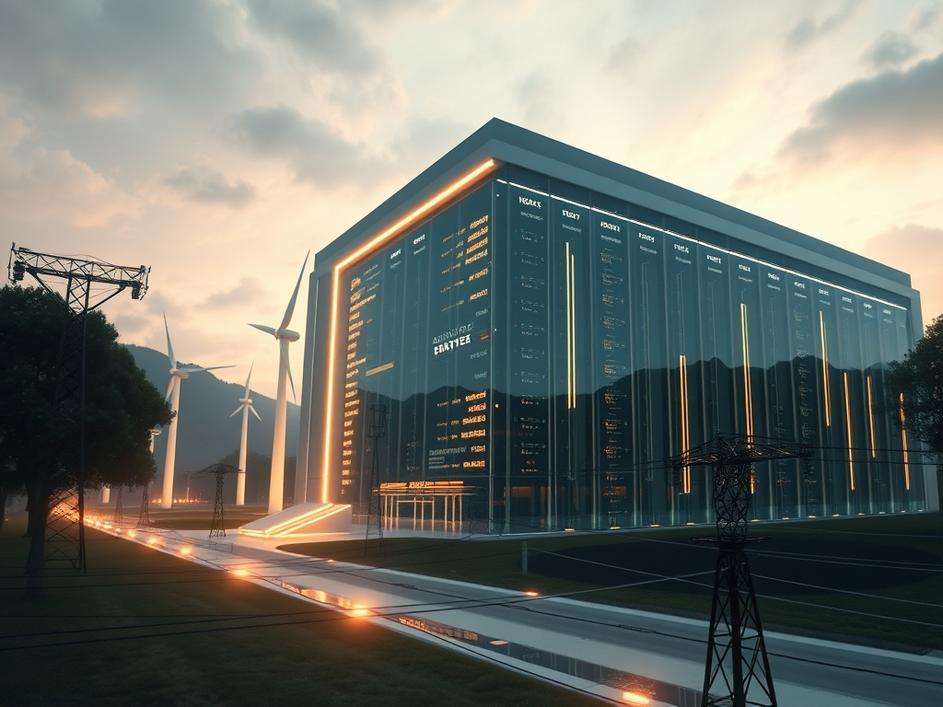


We are a digital agency helping businesses develop immersive, engaging, and user-focused web, app, and software solutions.
2310 Mira Vista Ave
Montrose, CA 91020
2500+ reviews based on client feedback

What's Included?
ToggleThink about how much we use the internet every day. We stream movies, scroll through social media, send emails, back up our photos, and rely on apps for almost everything. All of this digital activity doesn’t just float around in the air; it lives in massive buildings called data centers. These aren’t just a few servers in a closet; they’re huge complexes, packed with computers that run non-stop, 24/7. And these places are incredibly power-hungry. They suck up so much electricity that their energy use is growing really fast. In fact, experts predict that by 2030, the amount of power these centers use in the U.S. could jump by another 7 to 12 percent. That’s a huge increase, and it brings up some big questions about where all that power comes from and what it means for our planet.
Now, imagine if these giant energy users could be a bit more… flexible. That’s the idea behind “flexible data centers.” Instead of just running at full throttle all the time, these centers can adjust when they draw power from the grid. Think of it like this: if you have a clothes dryer, you might run it in the evening. But what if you could tell it to start drying clothes only when electricity is cheaper, say, late at night, or when there’s a lot of solar power available? Flexible data centers work on a similar principle. They can pause certain tasks or shift workloads to different times, or even to different locations, depending on the availability and cost of electricity. This smart approach is meant to help them save money and also to help the overall electricity grid manage its load better.
On the surface, this flexibility sounds like a great idea, right? For the data centers themselves, it means they can save a lot on their electricity bills. They can choose to power up more when electricity is cheaper, often when renewable sources like wind and solar are producing a lot of energy. This also helps the power grid. When there’s a surge of renewable energy, but not enough demand to use it all, the grid operators sometimes have to pay to switch off those clean energy sources. If data centers can soak up that extra power, it helps balance the system. It lets us use more of the green energy we produce, instead of letting it go to waste. So, in theory, flexible data centers can be good for their wallets and good for using renewable energy more efficiently.
But here’s where things get a bit tricky, and it’s a problem we need to really think about. While flexible data centers can save money and help balance the grid, they might also, unintentionally, lead to more pollution. How? Well, imagine a time when the grid is strained. Maybe there’s not much wind, the sun has set, and everyone is blasting their air conditioning. At these moments, the electricity is more expensive, and often it’s coming from “peaker” plants – older, less efficient power stations that burn fossil fuels to quickly meet demand. If flexible data centers are only focused on cutting costs, they might choose to power down during periods of cheaper, cleaner energy, only to ramp up their usage when the grid is relying on these dirtier, more expensive sources. This means that while they might be saving money, their actions could be contributing to higher overall carbon emissions. It’s a classic example of how something that seems smart for one goal (cost savings) can have a complicated, not-so-great effect on another goal (reducing carbon).
The issue gets even more complex when you try to figure out the actual carbon impact. It’s not always straightforward to know exactly where the electricity powering a data center comes from at any given moment. The grid is a giant, interconnected web. So, if a data center shifts its energy use, it’s hard to point to a specific power plant and say, “Yep, that extra power came from here.” This makes it tough for data center operators, and for those who set energy rules, to truly understand the environmental consequences of their decisions. If we only look at the dollar signs, we might miss the bigger picture of environmental impact. We need better ways to measure and track the carbon footprint of these flexible operations, so we can make truly informed choices that benefit both our budgets and our planet.
So, what can we do about this? We can’t just stop using data centers; they’re essential to our modern lives. The key is to be smarter about how we make them flexible. Instead of just chasing the lowest price for electricity, data centers could aim for the lowest carbon footprint. This means policies and incentives should encourage flexibility that specifically uses renewable energy, or even helps store it. For example, data centers could be encouraged to invest in their own battery storage systems, charging them up with clean energy when it’s abundant and using that stored power when the grid is otherwise dirty or strained. We also need to push for more transparent carbon tracking on the grid, so everyone knows the true environmental cost of their power at any moment. Regulators, tech companies, and even us, as users, have a role to play in demanding a greener digital infrastructure.
The rise of flexible data centers shows us a bigger truth about our energy future: solutions that seem simple often have layers of complexity. While optimizing power use for cost savings is a smart business move, we must also make sure it aligns with our environmental goals. We need to move beyond just efficiency and cost, and start prioritizing truly clean energy choices. Our digital world is only going to grow, so how we power it matters a great deal. It’s a balancing act, and it will take smart thinking, new technologies, and a shared commitment to ensure our online convenience doesn’t come at the expense of a healthy planet.



Leave a reply